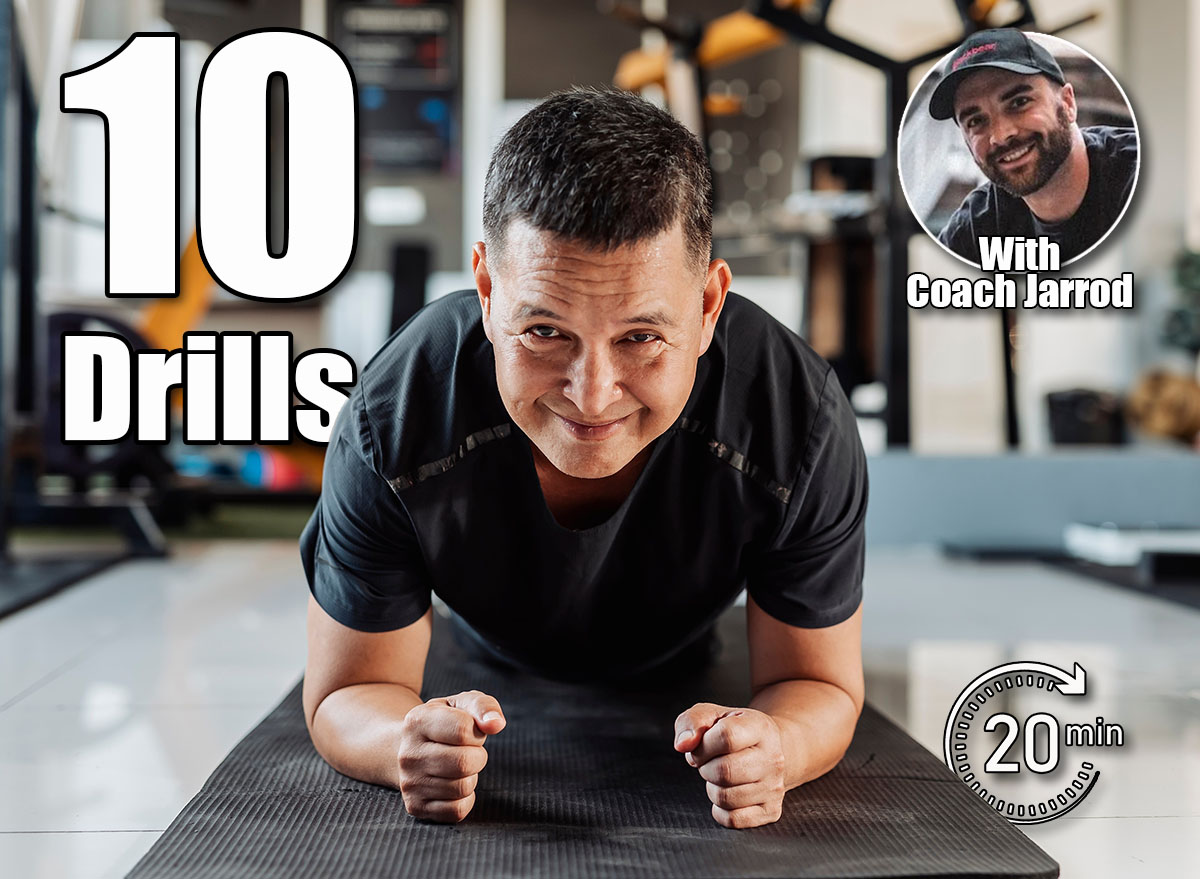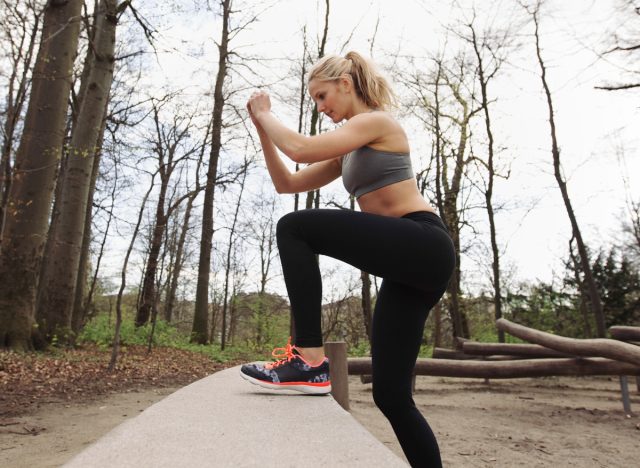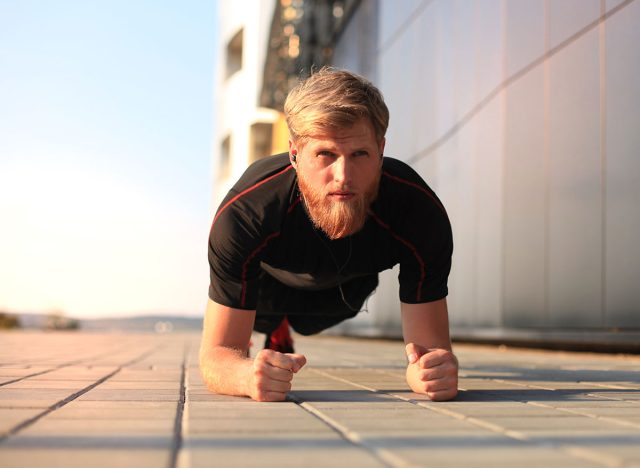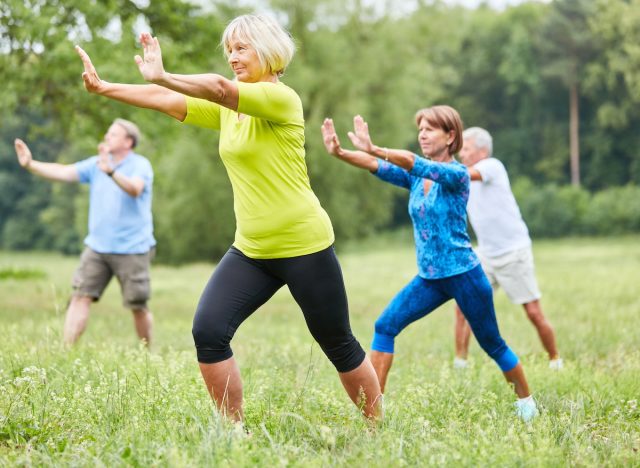Over 50? If You Can Do These Strength Drills, You’re in Great Shape

Once you reach your 50s, your body naturally loses 1–2% of muscle mass per year, while strength declines even faster. Bone density also decreases, raising the risk of osteoporosis and fractures. Resistance training is the most effective way to counteract this process. It builds lean muscle, keeps your metabolism active, and strengthens bones through mechanical loading that stimulates growth.
Strength training is about more than physical appearance. It’s the foundation of independence—helping you climb stairs, lift groceries, and rise from a chair with confidence. It also protects against frailty and falls, two of the most significant risks to quality of life as we age.
The benefits extend to the brain. Resistance training has been linked to improvements in coordination, neuroplasticity, and even cognitive performance. Combined with balance-focused practices such as Pilates, Tai Chi, or yoga, training can reduce fall rates by nearly 23% and the number of individuals who fall by 15%.
So what does “good shape” mean after 50? It represents strength, mobility, balance, and energy to live fully. If you can master these 10 drills, with safe progressions, proper form, and gradual overload, you’ll be setting yourself up for decades of resilience.
10 Strength Drills That Keep You in Shape After 50
Drill #1: Squat to Chair
Squats are the foundation of lower-body strength and independence. They teach you how to sit and stand safely, a fundamental movement for daily life. Strong legs and hips not only power stair climbing but also protect against falls and build the strength to keep you moving freely.
Muscles Trained: Quadriceps, glutes, hamstrings, core
How to Do It:
- Stand in front of a sturdy chair with your feet shoulder-width apart.
- Extend your arms forward for balance and keep your chest tall.
- Push your hips back, then bend your knees to lower slowly.
- Lightly tap your glutes to the chair without fully sitting.
- Press through your heels to return to standing.
Recommended Sets and Reps: 3 sets of 8–12 reps, resting 60 seconds.
Best Variations: Bodyweight squat, goblet squat, split squat
Form Tip: Think “sit back, then down” to protect your knees.
Drill #2: Push-Ups (With Modifications)

Push-ups build upper-body and core strength while reinforcing posture. They improve shoulder health and prepare you for daily pushing tasks like closing doors, carrying groceries, or getting up from the ground. Modifications allow everyone to build pressing strength, no matter your starting level.
Muscles Trained: Chest, shoulders, triceps, core
How to Do It:
- Place your hands on a wall, countertop, or bench for support.
- Walk your feet back until your body forms a straight line.
- Brace your core and keep your hips aligned with your shoulders.
- Bend your elbows to lower your chest toward your hands.
- Press through your palms to return to the starting position.
Recommended Sets and Reps: 3 sets of 8–15 reps, resting 60–75 seconds.
Best Variations: Wall push-ups, knee push-ups, standard push-ups
Form Tip: Keep your core braced as if holding a plank.
Drill #3: Deadlift (Dumbbell or Kettlebell)
The deadlift strengthens the back side of your body, the glutes, hamstrings, and lower back, while teaching you how to lift safely from the ground. It protects your spine, builds hip strength, and improves your ability to lift heavy objects without strain.
Muscles Trained: Glutes, hamstrings, lower back, core, forearms
How to Do It:
- Stand with a kettlebell or dumbbells in front of your thighs.
- Keep a soft bend in your knees and hinge at your hips.
- Lower the weight to mid-shin while keeping your back flat.
- Drive through your heels and squeeze your glutes to rise tall.
- Keep the weight close to your body throughout the movement.
Recommended Sets and Reps: 3–4 sets of 6–10 reps, resting 75 seconds.
Best Variations: Kettlebell deadlift, Romanian deadlift, trap-bar deadlift
Form Tip: Focus on “hips back,” not “bend over.”
Drill #4: Farmer’s Carry
This move builds grip strength, posture, and core stability—qualities that directly influence longevity. A strong grip makes everyday tasks like carrying groceries effortless, while the walking component conditions your balance and gait. It’s a simple drill that delivers full-body results.
Muscles Trained: Forearms, shoulders, traps, core, glutes
How to Do It:
- Hold a dumbbell or kettlebell in each hand at your sides.
- Stand tall with your shoulders back and core braced.
- Walk forward in a straight line with controlled steps.
- Keep your arms straight and weights steady at your sides.
- Cover 20–40 yards, then set the weights down safely.
Recommended Sets and Reps: 4–5 carries of 20–40 yards, resting 60–90 seconds.
Best Variations: Single-arm carry, suitcase carry, overhead carry
Form Tip: Stay tall as if balancing a book on your head.
Drill #5: Step-Ups

Step-ups strengthen each leg individually, improving balance, stability, and coordination. They mimic stair climbing and reinforce strength in the hips, knees, and ankles—all key for moving with confidence. Training one leg at a time also corrects imbalances and builds injury resistance.
Muscles Trained: Quadriceps, glutes, hamstrings, calves
How to Do It:
- Stand in front of a sturdy bench or step.
- Place one foot entirely on the surface with your knee stacked over your ankle.
- Press through your lead heel to lift your body.
- Drive your opposite knee upward at the top.
- Lower back down slowly and repeat.
Recommended Sets and Reps: 3 sets of 10–12 reps per leg, resting 60 seconds.
Best Variations: Weighted step-up, lateral step-up, step-up with knee drive
Form Tip: Drive through the lead foot, not the back foot.
Drill #6: Glute Bridge

The glute bridge restores strength in the muscles that often weaken with age and sitting. Strong glutes power every step you take, stabilize your hips, and protect your lower back. This simple drill also improves posture and reduces the aches that come from a sedentary lifestyle.
Muscles Trained: Glutes, hamstrings, core
How to Do It:
- Lie on your back with your knees bent and feet flat.
- Place your arms at your sides with palms down.
- Drive through your heels to lift your hips off the floor.
- Squeeze your glutes at the top, creating a straight line from shoulders to knees.
- Lower your hips back down under control.
Recommended Sets and Reps: 3–4 sets of 10–15 reps, resting 45–60 seconds.
Best Variations: Single-leg bridge, hip thrust, banded bridge
Form Tip: Let your hips, not your back, do the work.
Drill #7: Plank Hold

A strong core protects your spine, improves balance, and enhances every movement you perform. Planks train deep stabilizers that reduce back pain, support better posture, and improve functional strength for everything from carrying bags to standing tall.
Muscles Trained: Core, shoulders, glutes
How to Do It:
- Place your forearms on the floor with elbows under your shoulders.
- Extend your legs behind you and rest on your toes.
- Keep your body in a straight line from head to heels.
- Brace your core and avoid sagging hips.
- Hold the position for time while breathing steadily.
Recommended Sets and Reps: Hold 20–45 seconds for 3–4 rounds, resting 45 seconds.
Best Variations: Side plank, high plank, plank with shoulder taps
Form Tip: Imagine pulling your elbows toward your toes.
Drill #8: Bird Dog
Bird dogs train balance and coordination by challenging opposite limbs to work together. They strengthen your core, glutes, and lower back while teaching spinal stability. This drill builds control and resilience, which helps prevent falls and back pain.
Muscles Trained: Core, glutes, lower back, shoulders
How to Do It:
- Begin on all fours with your hands under your shoulders and knees under your hips.
- Extend your right arm forward and left leg back until parallel to the floor.
- Hold briefly while keeping your hips square.
- Return to the starting position under control.
- Repeat on the opposite side.
Recommended Sets and Reps: 3 sets of 6–10 reps per side, resting 45 seconds.
Best Variations: Weighted bird dog, stability ball bird dog, extended holds
Form Tip: Keep your hips level, as if balancing a glass of water.
Drill #9: Kettlebell Swing (Advanced)
The kettlebell swing trains explosive hip power, which is often lost with age. Developing power improves reaction time and helps you avoid falls. This drill also conditions your heart and lungs while strengthening your backside, making it one of the most efficient exercises you can perform.
Muscles Trained: Glutes, hamstrings, core, shoulders
How to Do It:
- Stand with your feet slightly wider than hip-width, kettlebell in front.
- Hinge at your hips and grip the kettlebell handle.
- Hike the kettlebell back between your legs.
- Drive your hips forward explosively to swing the bell to chest height.
- Let the kettlebell fall naturally, then repeat.
Recommended Sets and Reps: 3 sets of 12–15 reps, resting 75–90 seconds.
Best Variations: Two-hand swing, single-arm swing, dead-stop swing
Form Tip: Generate power from your hips, not your arms.
Drill #10: Balance Practice (Tai Chi, Pilates, or Yoga)

Balance is the key to staying independent. Training it directly reduces fall risk, sharpens coordination, and improves body awareness. Practices like Tai Chi, Pilates, and yoga combine strength and control, giving you the stability and confidence to move safely in any environment.
Muscles Trained: Core, stabilizers, hips, legs, posture muscles
How to Do It:
- Choose Tai Chi, Pilates, or yoga for your balance practice.
- Schedule 1–2 sessions per week, each lasting 20–40 minutes.
- Focus on slow, controlled movements that challenge balance.
- Use breathing to improve coordination and relaxation.
- Progress by holding positions longer or adding new routines.
Recommended Sets and Reps: 20–40 minutes, 1–2 sessions weekly.
Best Variations: Standing yoga poses, Pilates mat work, Tai Chi sequences
Form Tip: Train near a wall or sturdy support at first.
The Big Picture: Keys to Staying Strong After 50
Strength and balance drills are effective strategies for independence, vitality, and long-term health. To make the most of your training:
- Prioritize resistance training: At least 2–3 sessions per week to maintain muscle and bone density.
- Include balance work: Add Tai Chi, Pilates, or yoga to reduce fall risk and sharpen coordination.
- Progress gradually: Apply progressive overload by increasing weight, reps, or time in small increments.
- Focus on form: Correct technique protects joints, builds strength safely, and keeps you training for years.
- Think holistically: Strength training supports metabolism, cardiovascular health, and even cognitive function.
References
- “Strength Training Builds More Than Muscles.” Harvard Health Publishing, 16 Jan. 2024, Harvard Health, https://www.health.harvard.edu/staying-healthy/strength-training-builds-more-than-muscles
- Hong, A Ram, and Sang Wan Kim. “Effects of Resistance Exercise on Bone Health.” Endocrinology and metabolism (Seoul, Korea) vol. 33,4 (2018): 435-444. doi:10.3803/EnM.2018.33.4.435
- Fragala, Maren S., Eduardo L. Cadore, Sandor Dorgo, Mikel Izquierdo, William J. Kraemer, Mark D. Peterson, and Eric D. Ryan. “Resistance Training for Older Adults: Position Statement from the National Strength and Conditioning Association.” Journal of Strength and Conditioning Research, vol. 33, no. 8, Aug. 2019, pp. 2019–2052. Wolters Kluwer, https://doi.org/10.1519/JSC.0000000000003230
- Aminirakan, Deniz et al. “Effects of combined cognitive and resistance training on physical and cognitive performance and psychosocial well-being of older adults ≥65: study protocol for a randomised controlled trial.” BMJ open vol. 14,4 e082192. 19 Apr. 2024, doi:10.1136/bmjopen-2023-082192
- Zhong, Yu-Jie, Qiang Meng, and Chia-Hsiu Su. “Mechanism-Driven Strategies for Reducing Fall Risk in the Elderly: A Multidisciplinary Review of Exercise Interventions.” Healthcare, vol. 12, no. 23, 2024, p. 2394. MDPI, https://doi.org/10.3390/healthcare12232394